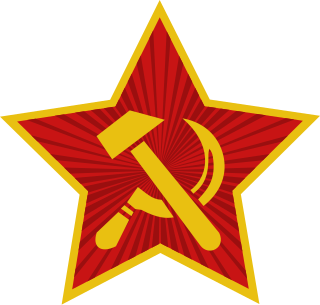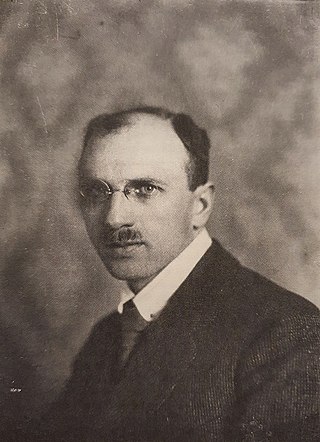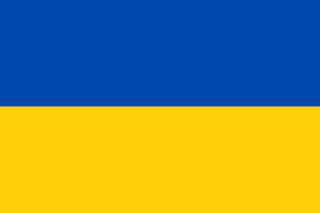Related Research Articles

The Social Democratic Party of Germany is a centre-left social democratic political party in Germany. It is one of the major parties of contemporary Germany.

The Communist Party of Germany was a major far-left political party in the Weimar Republic during the interwar period, an underground resistance movement in Nazi Germany, and a minor party in West Germany during the postwar period until it was banned by the Federal Constitutional Court in 1956.

The Landtag of Bavaria, officially known in English as the Bavarian State Parliament, is the unicameral legislature of the German state of Bavaria. The parliament meets in the Maximilianeum in Munich.
In the fourteen years the Weimar Republic was in existence, some forty parties were represented in the Reichstag. This fragmentation of political power was in part due to the use of a peculiar proportional representation electoral system that encouraged regional or small special interest parties and in part due to the many challenges facing the nascent German democracy in this period.

Ernst Niekisch was a German writer and politician. Initially a member of the Social Democratic Party (SPD) and of the Alte Sozialdemokratische Partei (ASP), he later became a prominent exponent of the National revolutionary branch of the Conservative Revolution and National Bolshevism.

The Landtag of Saxony, also known in English as the Saxon State Parliament, is the legislature of the Free State of Saxony, one of Germany's sixteen states. It is responsible for legislation, control of the government, and electing some state officials. The Landtag has existed in various forms since 1831, but the current body was established during German reunification in 1990. The Landtag is directly elected and has a term of five years.

The Free State of Brunswick was a state of the German Reich in the time of the Weimar Republic. In 1933 it was de facto abolished in Nazi Germany. It was formed after the abolition of the Duchy of Brunswick in the course of the German Revolution of 1918–19. Its capital was Braunschweig (Brunswick). The free state was disestablished after the Second World War in 1946.

The Reich Party of the German Middle Class, known from 1920 to 1925 as the Economic Party of the German Middle Classes, was a conservative German political party during the Weimar Republic. It was commonly known as the Wirtschaftspartei or WP.
Georg Gradnauer was a German newspaper editor and politician for the Social Democratic Party of Germany (SPD), and the first elected Minister-President of Saxony following the end of the monarchy.
Hermann Liebmann was a German politician from the Social Democratic Party (SPD). He died shortly after his release from a Nazi concentration camp as a result of abuse received while imprisoned.
Otto Körting was a German politician.
Paul Franken was a German Socialist politician.

Olga Körner was a German political activist and a co-founder of the proletarian women's movement in Dresden. Between 1930 and 1933 she sat as a member of the national parliament ("Reichstag").
Marie Martha Schlag was a German politician. During the Weimar period she sat as a member of the Saxony regional parliament . Later, in April 1946, she was a delegate at the party conference which enacted the contentious merger that gave rise to the Socialist Unity Party (SED), after 1949 the ruling party in a new kind of one-party dictatorship, the Soviet sponsored German Democratic Republic.
Margarete Nischwitz was a German political activist and politician (KPD). She sat as a member of the Saxony regional parliament (Landtag) in Dresden between 1929 and 1933.
Max Silbermann was a German politician. He served as a member of the Saxon regional parliament ("Landtag") between 1931 and 1933.
Arthur Lieberasch was a Communist trades union official who became a member of the Parliament of Saxony and, after 1933 an anti-government resistance activist.
Sepp Oerter was a German politician and journalist. As a young man he was an activist member of various anarchist groups. He later moved over to socialist groupings and parties, including the Social Democratic Party (SPD) and, after the SPD split, the anti-war Independent Social Democratic Party . During and directly after the revolution, for two months during the first half of 1919 and then for more than a year during 1920/21, he served as head of the regional government / Minister-president in the Free State of Braunschweig (Brunswick). By the time of his death he had broken with the political left and joined the National Socialists.

August Winnig was a German politician, essayist and trade unionist.
Richard Schubert was a German political activist who by the end of the First World War had become a peace activist. He joined the anti-war Independent Social Democratic Party when it was launched in 1917 and switched to the Communist Party soon after its establishment. He played a leading part in the turmoil in Zwickau during the months of revolution in the ports and cities that followed the war, and was a leading figure locally in the communist parties during the politically fractious 1920s. In 1931 he became a member of the Saxon state parliament (Landtag), but his political career was cut short by the change of government and abolition of democracy during 1933.
References
- ↑ Lau, Matthias. Pressepolitik als Chance: staatliche Öffentlichkeitsarbeit in den Ländern der Weimarer Republik . Stuttgart: Steiner, 2003. p. 414
- 1 2 Labour and Socialist International. Kongress-Protokolle der Sozialistischen Arbeiter-Internationale - B. 3.1 Brüssel 1928 . Glashütten im Taunus: D. Auvermann, 1974. p. IV. 41
- ↑ Lapp, Benjamin. Revolution from the Right: Politics, Class, and the Rise of Nazism in Saxony, 1919 - 1933 . Boston: Humanities Press, 1997. p. 118
- 1 2 3 4 5 6 7 8 9 10 11 12 13 14 Lapp, Benjamin. A 'National' Socialism: The Old Socialist Party of Saxony, 1926-32 , in Journal of Contemporary History, Vol. 30, No. 2 (Apr., 1995), pp. 291-309
- ↑ Keppeler-Schrimpf, Helga. "Bildung ist nur möglich auf der Grundlage des Volkstums.": eine Untersuchung zu Richard Seyferts volkstümlicher Bildungstheorie als volkschuleigene Bildungskonzeption . Münster: LIT, 2005. p. 383
- ↑ Lapp, Benjamin. Revolution from the Right: Politics, Class, and the Rise of Nazism in Saxony, 1919 - 1933 . Boston: Humanities Press, 1997. pp. 111-112
- 1 2 Barclay, David E., and Eric D. Weitz. Between Reform and Revolution: German Socialism and Communism from 1840 to 1990 . New York: Berghahn, 2002. p. 303
- ↑ Lapp, Benjamin. Revolution from the Right: Politics, Class, and the Rise of Nazism in Saxony, 1919 - 1933 . Boston: Humanities Press, 1997. p. 119
- 1 2 Lapp, Benjamin. Revolution from the Right: Politics, Class, and the Rise of Nazism in Saxony, 1919 - 1933 . Boston: Humanities Press, 1997. p. 120
- 1 2 3 4 Lapp, Benjamin. Revolution from the Right: Politics, Class, and the Rise of Nazism in Saxony, 1919 - 1933 . Boston: Humanities Press, 1997. pp. 124-125
- ↑ Lönne, Karl-Egon. Il fascismo come provocazione: "Rote Fahne" e "Vorwärts" a confronto con il fascismo italiano tra il 1920 e il 1933 . Napoli: Guida Editori, 1985. p. 143
- ↑ Szejnmann, Claus-Christian W. Nazism in Central Germany: The Brownshirts in 'red' Saxony . Monographs in German history, v. 4. New York: Berghahn Books, 1999. pp. 18-19
- ↑ Szejnmann, Claus-Christian W. Nazism in Central Germany: The Brownshirts in 'red' Saxony . Monographs in German history, v. 4. New York: Berghahn Books, 1999. p. 120